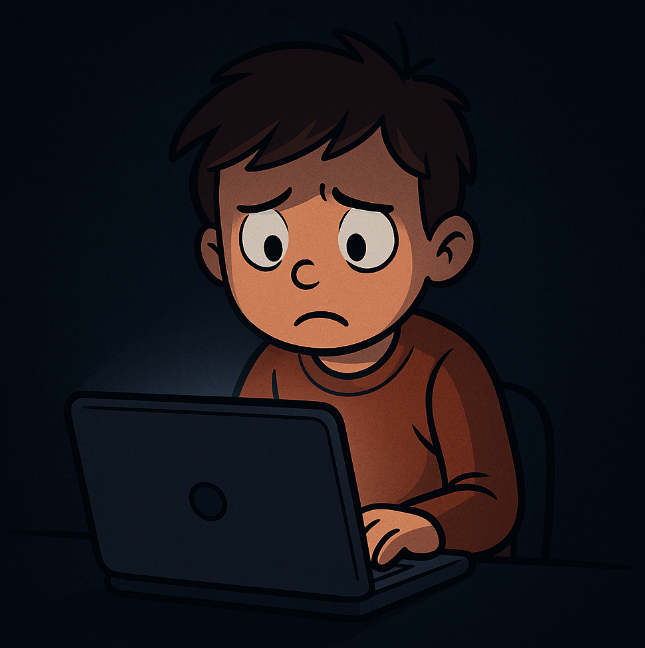
When the Playground Turns Digital: What Parents & Educators Must Know About Online Moral Deviance
It started with a sixth grader posting a snarky meme about a classmate’s clothes. “It’s just a joke,” he told the teacher. But by lunch, half the school had shared it. By dismissal, the girl it targeted was sobbing in the counselor’s office, begging her mom not to send her back the next day.
This isn’t just “kids being kids” in the age of TikTok. It’s part of a bigger—and growing—problem that researchers call online moral deviance. And while that term sounds like it belongs in a law textbook, it’s really about something we see every day: young people doing harmful things online that violate basic expectations of kindness, honesty, and respect.
So, What Exactly Is Online Moral Deviance?
In a massive review of nearly 200 studies, psychologists Xu Chen and colleagues identified a pattern: there’s a whole spectrum of digital misbehavior that isn’t always illegal but is deeply damaging. These behaviors break moral norms—rules most of us agree on, regardless of politics or parenting style.
Seven of the biggest offenders include:
- Cyberbullying – repeated, targeted online attacks meant to humiliate or harm.
- Online harassment – everything from hurtful comments to hate speech and threats.
- Internet trolling – deliberately provoking people to upset, frustrate, or silence them.
- Flaming – hostile, often insulting online arguments that spiral fast.
- Internet plagiarism & online cheating – copying work, buying assignments, or misusing AI without credit.
- Academic misconduct – broader unethical school behaviors, often made easier by tech.
On the surface, these might seem like different issues, but they share the same DNA: intentional harm or dishonesty in a digital space.
Why It Hits Kids Harder Than Adults
Think about the old “playground fight.” It had limits—time, place, and audience. But when the playground is a group chat, gaming server, or social feed, those limits vanish.
- No off switch: Digital cruelty follows kids home. There’s no safe space to recover.
- Bigger audiences: One cruel post can reach hundreds—or thousands—within hours.
- Harder to spot: Teachers and parents may have no idea it’s happening until the damage is done.
Research shows victims of cyberbullying and harassment face higher risks of anxiety, depression, academic decline, and even self-harm. The mental health fallout isn’t “soft” or exaggerated—it’s as real as any injury from a physical fight.
Where It Starts: The Science of Digital Misbehavior
Chen’s team found that online moral deviance often springs from a mix of:
- Moral disengagement: Kids convince themselves their actions aren’t really wrong (“She deserved it,” “It’s just a joke”).
- Peer pressure & status seeking: Being “funny” or “brave” online can win likes and followers.
- Low digital empathy: Without face-to-face feedback—like seeing someone’s hurt expression—it’s easier to cross the line.
- Stress & time pressure: In the academic arena, cheating is often linked to feeling overwhelmed or desperate.
And here’s the kicker: behaviors often overlap. A student who cheats on homework might also share hurtful memes. The same lack of empathy or respect for rules can fuel multiple forms of harm.
The Teacher’s Dilemma: More Than Just Discipline
If you work in a school, you know the mental load these cases carry. A single online harassment incident can mean:
- Counseling sessions for the victim
- Meetings with multiple parents
- Disciplinary hearings for the perpetrator
- Ripple effects in peer groups for weeks or months
But here’s what the research makes clear: prevention works better than punishment. Schools that integrate digital ethics into everyday learning—just like reading or math—see fewer incidents and faster resolution when problems do arise.
What Parents & Educators Can Do Today
1. Name the behavior: Kids can’t avoid a danger they can’t define. Teach them the terms—cyberbullying, trolling, flaming—so they recognize them early.
2. Model digital empathy: Show what respectful disagreement looks like online. Comment kindly, cite sources, and avoid knee-jerk reactions.
3. Use real-life examples: Talk about news stories or local incidents in a non-shaming way: “What do you think should have happened here?”
4. Create “pause” habits: Encourage students to pause before posting or sending—especially when angry or stressed.
5. Make reporting safe: Anonymous reporting tools and trusted adults can help students speak up before harm spreads.
Why This Matters for Every Child’s Future
Today’s middle schooler is tomorrow’s college applicant, job candidate, and community leader. Online moral deviance doesn’t just hurt their peers—it can damage reputations, limit opportunities, and erode trust for years to come.
By addressing these issues in elementary and middle school, we’re not just stopping harmful behavior—we’re building empathy, integrity, and resilience for life.
The Bottom Line
Online moral deviance isn’t a niche tech issue. It’s a mainstream child development and mental health challenge—one that’s shaping classrooms, friendships, and futures. If we want safer schools and healthier kids, we have to stop treating these behaviors as isolated problems and start seeing them as connected threads in a much bigger digital fabric.
Let’s Talk About It
- What’s the biggest mental health challenge you see in schools today?
- How can schools better support students’ emotional well-being?
- What’s one school psychology insight that’s changed the way you parent or teach?



